Canadian
Line Perforation Gauge Measurements
© 2017 Julian J. Goldberg
Updated 6/28/2020
Line Perforating Machines (Perforators)
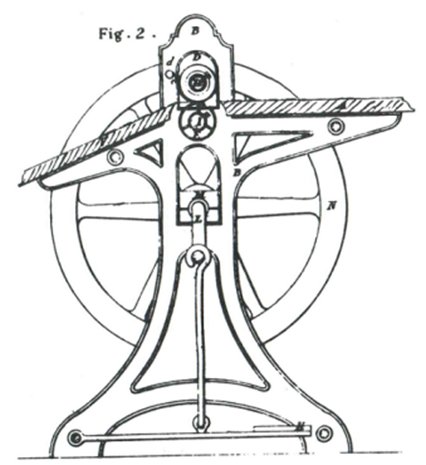
The first rotary perforator was invented by William and Henry Bemrose of William Bemrose & Sons, Derby, Derbyshire, England, U.K. with U.K. patent number 2607 of 1854 (Reference: Early American Perforating Machines and Perforations 1857-1867, Winthrop S. Boggs, The Collectors Club, Inc., September 1954, Pages 2 to 10).
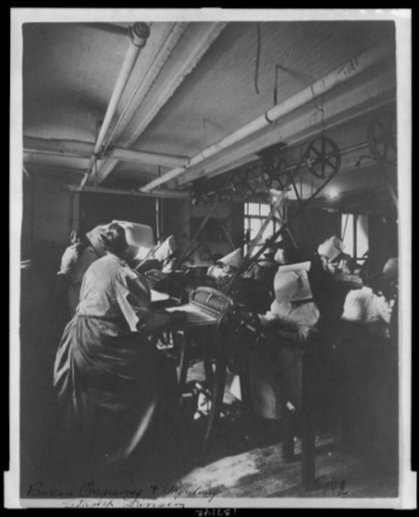
The George C. Howard Company, Philadelphia, PA, U.S.A. made rotary small wheel perforators with U.S. patent number 32,370 of 1861 (Reference: The 3c. ’51-’57 Chronicle, “Early American Perforating Machines”, Edgar H. Kent, Tracy W. Simpson, July 24, 1954, Issue Number 20, Volume 7, Number 2, Page 2) [See small perforating wheel sizes (a) and (b)]. The George C. Howard Company supplied their rotary wheel perforators to the American Bank Note Company (ABN) and the British American Bank Note Company (BABN).
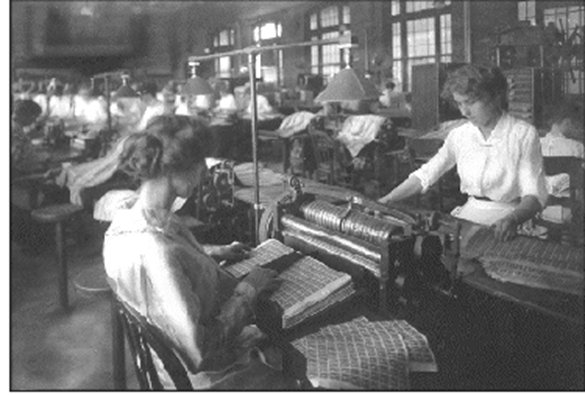
The Universal Telegraphic Company, Baltimore, MD, U.S.A. made rotary small wheel perforators (Reference: The United States Postage Stamps Of The 20th Century 1901-1922, Volume 1 (Revised Edition), Max G. Johl, March 1937, H.L. Lindquist, Page 149) [See small perforating wheel sizes (a) and (c)]. The Universal Telegraphic Company supplied their rotary wheel perforators to the U.S. Bureau of Engraving and Printing (BEP) which supplied them to the British American Bank Note Company (BABN).
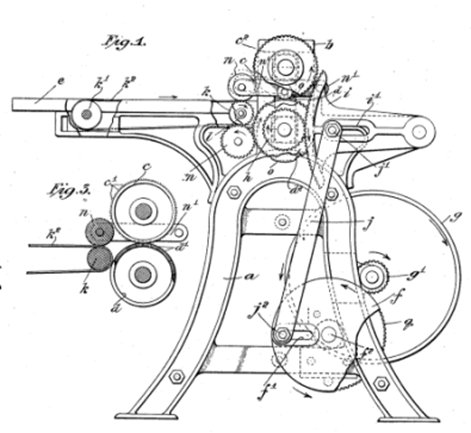
The American Bank Note Company, New York, NY, U.S.A. made rotary small wheel perforators with U.S. patent number 1,120,753 of 1914 [See small perforating wheel sizes (a) and (b)]. The American Bank Note Company (ABN), Ottawa, Ontario which changed its name to the Canadian Bank Note Company (CBN), Ottawa, Ontario in 1922 was a subsidiary of the American Bank Note Company (ABN), New York, NY which supplied their rotary wheel perforators to its Canadian subsidiary.
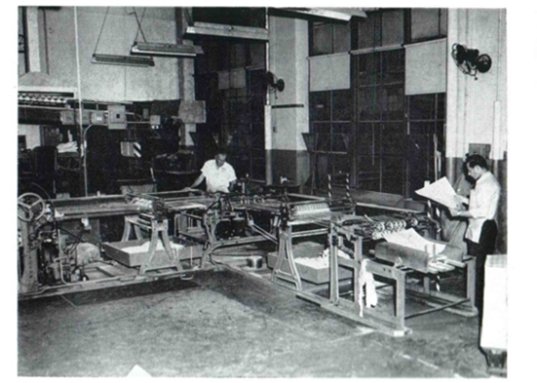
The manufacturer of rotary small wheel L-perforators was John McAdams & Sons, Inc., Norwalk, CT, U.S.A. (Reference: The Norwalk Hour Special Edition, “A Brief History of John McAdams & Sons, Inc.”, August 12, 1958, Page 15) [See small perforating wheel size (b)]. John McAdams & Sons supplied their rotary wheel L-perforators to the Canadian Bank Note Company (CBN) and to the British American Bank Note Company (BABN).
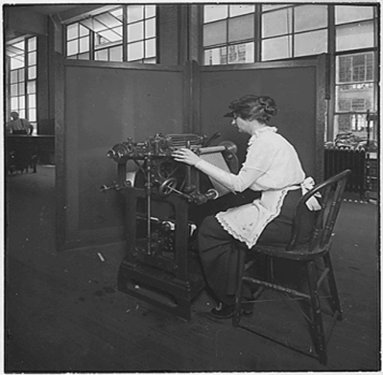
The manufacturer of rotary short bar perforators was the Potter Printing Press Company, Plainfield, NJ, U.S.A. (Reference: Congressional Record Set: 63rd Congress December 7– March 4, 1915, “Travel Expenses, Government Employees, in the interest of the Bureau of Engraving and Printing, fiscal year 1914”, B.R. Stickney, mechanical expert and designer) [See short perforating bar sizes (d)]. The Potter Printing Press Company supplied their rotary bar perforators to the U.S. Bureau of Engraving and Printing (BEP) which supplied them to the British American Bank Note Company (BABN). The Canadian Bank Note Company (CBN) made their own bar perforators for themselves.
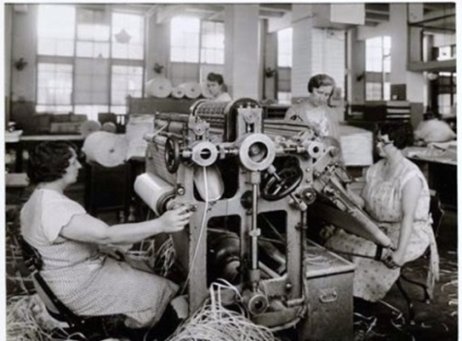
The manufacturer of long bar and small wheel perforators was the Crown Cork & Seal Company, Baltimore, MD, U.S.A. (Reference: Stamp Perforations with Particular Emphasis on Canadian Stamps, Richard A. Johnson, British North American Philatelic Society (BNAPS), 2009, Pages 62, 65) [See small perforating wheel size (a) and (c); See long perforating bar sizes (e) and (f)]. The Crown Cork & Seal Company supplied their rotary bar and rotary wheel perforators to the U.S. Bureau of Engraving and Printing (BEP) which supplied them to the British American Bank Note Company (BABN).
The banknote printing companies that line perforated Canadian postage stamps were the American Bank Note Company (ABN) from 1858 to 1868 and 1897 to 1922, the Canadian Bank Note Company (CBN) from 1922 to 1974, the British American Bank Note Company (BABN) from 1868 to 1897, 1930 to 1935 and 1968 to 1978.
Rotary Perforating Wheels
Rotary perforating wheels were used to perforate sheet-fed flat plate press printed sheet and booklet stamps. Perforators with rotary perforating wheels were used to perforate sheet-fed rotary press printed sheet, booklet and coil stamps. Perforators with a combination of rotary perforating wheels and rotary perforating bars were used to perforate web-fed rotary press printed sheet and booklet stamps. Stamps perforated by rotary perforating wheels mostly do not have an exact alignment correspondence between perforations in different rows since they were perforated by several separate moving different perforating wheels. From 1912 to 1967, the perforating wheel pin diameter width size was 0.042" (References 2, 8, 9).
| Center to center distance between perforations in inches | Perforating pin width diameter size in inches | Number of perforations per two centimeters | Number of pins or holes on rotary perforating wheels | Perforating wheel size diameter and circumference | References |
| 0.09894” | 0.042" | 7.96 | 128 | (a) small perforating wheels with a 4 1/32″ (4.03125″) diameter and a 12.665″ (12 2/3″?) circumference (1912-1931) (1935-1969 coil tabs) |
1 |
| 0.07252” | 0.044" | 10.86 | 176 | (b) small perforating wheels with a 4 1/16″ (4.0625″) diameter and a 12.763″ (12 3/4″?) circumference (1968-1978) |
1, 2, 3, 4, 5 |
| 0.07224” | 0.042" | 10.94 | 176 | (c) small perforating wheels with a 4 3/64″ (4.046875″) diameter and a 1 2.714″ (12 5/7″?) circumference (1930-1932) |
1 |
| 0.07196” | 0.042" | 10.94 | 176 | (a) small perforating wheels with a 4 1/32″ (4.03125″) diameter and a 12.665″ (12 2/3″?) circumference (1930-1935) |
1, 2, 3 |
| 0.06846” | 0.040" | 11.50 | 185 | (a) small perforating wheels with a 4 1/32″ (4.03125″) diameter and a 1 2.665″ (12 2/3″?) circumference (1873-1882) |
1 |
| 0.06809” | 0.040" | 11.56 | 186 | (a) small perforating wheels with a 4 1/32″ (4.03125″) diameter and a 1 2.665″ (12 2/3″?) circumference (1873-1882) |
1 |
| 0.06773” | 0.040" | 11.63 | 187 | (a) small perforating wheels with a 4 1/32″ (4.03125″) diameter and a 1 2.665″ (12 2/3″?) circumference (1873-1882) |
1 |
| 0.06701” | 0.040" | 11.75 | 189 | (a) small perforating wheels with a 4 1/32″ (4.03125″) diameter and a 1 2.665″ (12 2/3″?) circumference (1858-1878) |
1 |
| 0.06647” | 0.040" | 11.85 | 192 | (b) small perforating wheels with a 4 1/16″ (4.0625″) diameter and a 12.763″ (12 3/4″?) circumference [small holes] (1862-1897) |
1, 2, 3, 5 |
| 0.06647” | 0.044" | 11.85 | 192 | (b) small perforating wheels with a 4 1/16″ (4.0625″) diameter and a 12.763″ (12 3/4″?) circumference [large holes] (1962-1974) |
6 |
| 0.06622” | 0.040" | 11.89 | 192 | (c) small perforating wheels with a 4 3/64″ (4.046875″) diameter and a 12.714″ (12 5/7″?) circumference (1868-1897) |
1 |
| 0.06596” | 0.040" | 11.94 | 192 | (a) small perforating wheels with a 4 1/32″ (4.03125″) diameter and a 12.665″ (12 2/3″?) circumference (1862-1967) |
1, 3, 5 |
| 0.06596” | 0.042" | 11.94 | 192 | (a) small perforating wheels with a 4 1/32″ (4.03125″) diameter and a 12.665″ (12 2/3″?) circumference [medium holes] (1912-1967) |
1, 3, 5 |
| 0.06562” | 0.040" | 12.00 | 193 | (a) small perforating wheels with a 4 1/32″ (4.03125″) diameter and a 12.665″ (12 2/3″?) circumference (1868-1897) |
1 |
| 0.06528” | 0.040" | 12.06 | 194 | (a) small perforating wheels with a 4 1/32″ (4.03125″) diameter and a 12.665″ (12 2/3″?) circumference (1868-1897) |
1 |
| 0.06495” | 0.040" | 12.12 | 195 | (a) small perforating wheels with a 4 1/32″ (4.03125″) diameter and a 12.665″ (12 2/3″?) circumference (1863-1897) |
1 |
| 0.06479” | 0.040" | 12.15 | 197 | (b) small perforating wheels with a 4 1/16″ (4.0625″) diameter and a 12.763″ (12 3/4″?) circumference (1863-1897) |
1, 2 |
| 0.06429” | 0.040" | 12.25 | 197 | (a) small perforating wheels with a 4 1/32″ (4.03125″) diameter and a 12.665″ (12 2/3″?) circumference (1883) |
1 |
| 0.06396" | 0.040" | 12.31 | 198 | (a) small perforating wheels with a 4 1/32″ (4.03125″) diameter and a 12.665″ (12 2/3″?) circumference (1883) |
1 |
| 0.06350" | 0.040" | 12.40 | 201 | b) small perforating wheels with a 4 1/16″ (4.0625″) diameter and a 12.763″ (12 3/4″?) circumference (1897) |
1, 2 |
| 0.06301” | 0.040" | 12.50 | 201 | (a) small perforating wheels with a 4 1/32″ (4.03125″) diameter and a 12.665″ (12 2/3″?) circumference (1870) |
1 |
| 0.06239” | 0.040" | 12.62 | 203 | (a) small perforating wheels with a 4 1/32″ (4.03125″) diameter and a 12.665″ (12 2/3″?) circumference (1864 revenues) |
1 |
| 0.06208" | 0.040" | 12.68 | 204 | (a) small perforating wheels with a 4 1/32″ (4.03125″) diameter and a 12.665″ (12 2/3″?) circumference (1864 revenues) |
1 |
| 0.06178" | 0.040" | 12.75 | 205 | (a) small perforating wheels with a 4 1/32″ (4.03125″) diameter and a 12.665″ (12 2/3″?) circumference (1864 revenues) |
1 |
| 0.05918" | 0.040" | 13.31 | 214 | (a) small perforating wheels with a 4 1/32″ (4.03125″) diameter and a 12.665″ (12 2/3″?) circumference (1864-1868 revenues) |
1 |
| 0.05891” | 0.040" | 13.37 | 215 | (a) small perforating wheels with a 4 1/32″ (4.03125″) diameter and a 12.665″ (12 2/3″?) circumference (1864-1868 revenues) |
1 |
| 0.05863" | 0.040" | 13.43 | 216 | (a) small perforating wheels with a 4 1/32″ (4.03125″) diameter and a 12.665″ (12 2/3″?) circumference (1864-1868 revenues) |
1 |
Rotary Perforating Bars
Rotary perforating bars were used to perforate web-fed rotary press printed coil stamps. Perforators with a combination of rotary perforating bars and rotary perforating wheels were used to perforate web-fed rotary press printed sheet and booklet stamps. Stamps perforated by rotary perforating bars mostly do have an exact alignment correspondence between perforations in different rows since they were perforated by several separate perforating bars mounted on the same one moving cylinder. From 1930 to 1969, the perforating bar pin diameter width size was 0.042" (References 2, 8, 9).
| Center to center distance between perforations in inches |
Perforating pin width diameter size in inches | Number of perforations per two centimeters | Number of pins or holes on perforating bar |
Perforating bar size length with pins or holes along it | References |
| 0.1005” | 0.042" | 7.84 | 86 | (d) perforating bars with a short perforating length of 8 41/64″ (8.640625″) [1/2 x (f) below] (1935-1948) | 7 |
| 0.09934” | 0.042" | 7.93 | 87 | (d) perforating bars with a short perforating length of 8 41/64″ (8.640625″) [1/2 x (f) below] (1935-1948) | 7 |
| 0.09001” | 0.042" | 8.75 | 96 | (d) perforating bars with a short perforating length of 8 41/64″ (8.640625″) [1/2 x (f) below] (1930-1933) | 7 |
| 0.08389” | 0.042" | 9.39 | 103 | (d) perforating bars with a short perforating length of 8 41/64″ (8.640625″) [1/2 x (f) below] (1948-1969) | 7 |
| 0.08308” | 0.042" | 9.48 | 104 | (d) perforating bars with a short perforating length of 8 41/64″ (8.640625″) [1/2 x (f) below] (1948-1969) | 7 |
| 0.07100” | 0.042" | 11.09 | 247 | (e) perforating bars with a long perforating length of 17 17/32″ (17.53125″) [found together with 10.94 and 10.90] (1930-1932) | 8 |
| 0.06997” | 0.042" | 11.25 | 247 | (f) Perforating bars with a long perforating length of 17 9/32″ (17.28125″) [2 x (d) above] [found together with 10.94 and 10.90] (1930-1932) | 2, 8, 9 |
| 0.05556" | 0.038" | 14.17 | 18 pins/holes per inch | Kingston Ontario Foundry stroke perforator early experimental perforation (1855-1857) | 10 |
References
[1] The Collectors Club Philatelist, "Perforation Gauge 12 Used on U.S. Washington-Franklin (Third Bureau Issue) Stamps", Julian J. Goldberg, Volume 93, Number 6, Nov.-Dec. 2014, Page 366 to 368.
[2] Stamps, “Perforation Spacing on the 1908-19 Issue”, November 23, 1935, Page 310.
[3] The Philatelic Gazette, “Fake Perforations”, J.B. Leavy, May 1918, Page 154.
[4] The United States Specialist, “Specialist Gauge Measurements”, Larry S. Weiss, Whole Number 710, Volume 60, Number 4, April 1989, Pages 207 to 209.
[5] Early American Perforating Machines and Perforations 1857-1867, Winthrop S. Boggs, The Collectors Club Inc., September 1954, Pages 19 to 20, 27 to 28.
[6] Corgi Times, “The Canadian Stamp Perforation Change of 1962”, Julian Goldberg, Volume XXI, Number 4, Whole Number 124, January-February 2013, Pages 62-63.
[7] U.S. Stamp News, “The Stickney Coil Perforator”, Louis E. Repeta, October 2007, Volume 13, Issue 10, Page 16.
[8] The Collectors Club Philatelist, “United States: Modern [1940s] Perforating Machines”, J.M. Kohler, July1960, Pages 188, 207.
[9] The United States Specialist, “The Stickney Rotary 11 x 10-1/2 Bar and Wheel Perforator”, Louis E. Repeta, Whole Number 756, Volume 63, Number 4, April 1992, Page 168.
[10] The Postage Stamps and Postal History of Canada, Winthrop S. Boggs, Chambers Publishing Company (Quarterman Publications), 1946 (1974), Pages 167 to 168.





